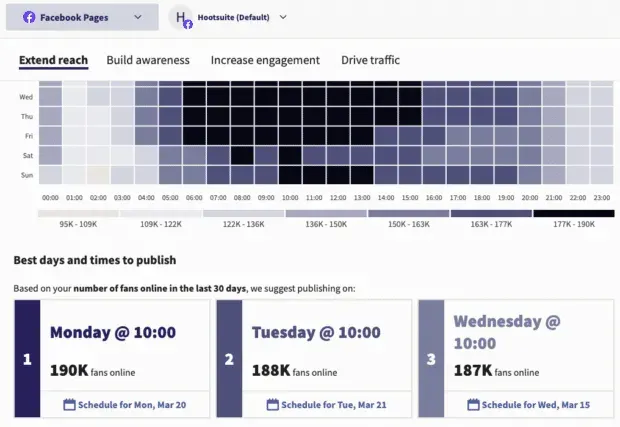We’ve all cringed at a dumb brand post or bad hashtag. These social misconceptions often boil down to a misunderstanding of the unspoken social media etiquette.
Social media may seem informal, but if you’re not posting on your personal account, you’ll still need to follow a few rules of engagement. Social media etiquette is more important than ever, especially now that brands are expected to be “human”and “authentic”online.
In this article, we will delve into the specifics of brand behavior on social networks. From crafting the perfect tweet to tackling a crisis, we’ll cover everything you need to know to improve your brand’s social media presence.
Social media etiquette is a set of conventions that dictate acceptable brand behavior on social media platforms. These informal (often unspoken) rules describe how companies should present themselves, respond to feedback, and interact with their audiences.
Brands that want to protect their reputation and build long-term customer relationships need to understand social media etiquette. Following these rules can help you strengthen your online image and build a sense of trust among your followers.
Here are a few specific reasons why a business should care about digital etiquette rules:
Maintains your company’s reputation
Social media is a public forum, so whatever you post is visible to the whole world. A post that violates these norms can tarnish a brand’s reputation and alienate followers.
Protects your brand from legal hurdles
If your brand operates in a regulated environment and must adhere to strict privacy and compliance guidelines, social media etiquette can keep you on the right side of the law while still engaging with your audience.
Helps navigate stressful situations
Brands must be prepared for a crisis. Clear rules of etiquette can help brands respond appropriately, mitigate negative impacts, and protect your image.
Ensures your brand stays responsive
Brands that ignore social media etiquette may come across as unprofessional or indifferent. This can lead to customer dissatisfaction and loss of business.
To help your brand avoid costly mistakes, we’ve compiled a list of 15 social media etiquette mistakes and how to avoid them.
1. Using hashtags like they’re going out of style
Have you ever seen a post with a list of hashtags that is longer than the title?
Hashtag overload often looks messy, but that’s not the only problem. Hashtags are important, but quality and relevance are more important than quantity.
First: of course, hashtags can be an effective way to increase the visibility of your posts. But when used in excess, they can come across as spammy and annoying.
Too many hashtags can dilute your message and make it hard for the reader to follow the conversation. Also, using irrelevant hashtags can make your content less visible.
Luckily, this wacky social media etiquette isn’t too hard to avoid. We have a complete guide on how to use hashtags on every network (including how many).
2. Ignoring your audience’s messages and comments
Unlike many marketing channels, social media is a two-way street. Disconnecting from a conversation by ignoring messages, comments, or questions from your followers is a big no-no.
Social media is about interacting and building relationships with your followers. When a brand ignores or hides comments, it gives the impression that they don’t care – and people notice. This is a sure way to lose followers and damage your brand’s reputation.
Besides, no one wants to feel like they’re screaming into the void. When people take the time to comment or send a message to your brand, they expect a response.
That’s why it’s so important to respond to comments and messages. The social media monitoring tool allows your team to quickly respond to all requests.

3. False interaction generation with spam bots
It can be tempting to increase your followers by buying followers or using spam bots to like your own posts. But this is not only unethical from a practical point of view, but it can also harm the reputation of your brand.
False engagement can create a false sense of success. You are really only hurting yourself by artificially inflating your numbers.
Plus, bots are easy to spot. When an account with a bunch of followers has little to no activity, people get suspicious.
And not only subscribers will notice this. Social media algorithms are getting smarter and can detect inauthentic interactions. This can lead to fines and even account blocking.
Don’t risk your brand reputation. Instead, focus on creating valuable content for your real audience.
Still feeling the urge to buy followers? Before you get a credit card, check out our results:
4. Cross-posting without content repurposing for each platform
TikTok, Twitter, Facebook, Instagram, Linkedin. Each channel serves a different purpose and caters to different segments of your target audience.
Copying and pasting the same post across platforms can save time. But often this is a mistake. Cross-posting without repurposing does not help build brand trust on this platform.
@hootsuite Times 👏 are 👏 changing 👏 Cross-posting across all social networks is so 2022… In 2023, it’s all about taking a strategic approach to cross-posting. Some videos might work across all social channels if you think your following on each platform can benefit from them. But not every video on TikTok needs to be posted on LinkedIn. This is your sign to do a deep dive into your unique audiences on each platform. Pay attention to the type of content they like to consume (long or short videos? thought-provoking or cheeky copy?), what their interests are, and the type of creators/brands they follow. Then brainstorm how you can deliver value and keep them engaged so they turn into a loyal follower. But, remember ⚠️ Cross-posting is a great way to maximize reach on a piece of content so we don’t want to throw this strategy out the window completely.#socialmediamanager #smm #socialmediastrategy
If you’re going to be cross-posting, consider this. Optimize your messages for each network’s unique algorithm. This means more engagement and a stronger brand presence on social media platforms.
5. Respond quickly to negative mentions of your brand
When you see negative comments or reviews about your brand, it can be tempting to lash out. Sometimes a quick response is required. But in this (as in many other things) your mother was right: if you speak before you think, it can do more harm than good.
A thoughtful response takes time, especially if the criticism is justified. A careless response can increase tension, which is not good for any business.
A quick response can even turn into a social media crisis for your brand. This means more negative mentions and more public backlash.
Instead of firing up the keyboard, take a deep breath and take a step back. Study the problem and come up with a thoughtful answer that will help solve the problem. Make sure your response reflects your brand’s values and tone and remains respectful.
This will help dispel negativity and can even turn an upset customer into a brand advocate.
6. Denigrating Your Competitors, Especially Small Businesses
While trying to “demolish”other businesses may seem tempting, this tactic can backfire.
We understand that you want to prove that your brand is the best. But a sneaky approach often shows just the opposite. Swearing about competitors just makes you look insecure.
Followers expect social media to be a place of positivity, transparency, and authenticity. You don’t want to create a toxic environment that detracts from your brand message.
Targeting small businesses on social media can be especially bad. These businesses often lack the resources to deal with negativity. It’s better to focus on creating great content, satisfying your customers, and building your own reputation.
7. Trying Too Hard to Start a Conversation
Getting engaged is always a good thing, right? Oh no. Coercive participation can quickly become overbearing, intrusive, and alienating.
Remember that social media is a conversation, not a lecture. It’s not just pushing content. You must also thoughtfully respond to comments and questions.
If you try too hard to grab attention, you risk bombarding your followers with irrelevant posts. This can make it hard for followers to tell if you’re listening or just posting for the sake of posting.
Too much pressure can lead to inappropriate conversations or threads that are too long. This may look like attempts to manipulate the algorithm with game volume. Keep conversations relevant and constructive when interacting with your followers. Let the conversation flow naturally.
8. Don’t Attribute Third-Party Content
Imitation is not always the most sincere form of flattery. Sometimes it’s just bad etiquette. Whether you’re sharing someone else’s content, using a quote from an article, or posting an image, it’s important to make sure you’re attributing it correctly.
Without properly citing your sources, subscribers may assume that your brand created the content. It also means that you do not understand or respect property rights.
Be sure to read the terms of use before using any third-party social media content. Each platform has its own set of rules regarding copyright infringement and content use.
Instead of just sharing, consider incorporating shared posts into your social strategy. Don’t worry about attribution when a creator gets a co-authorship!
9. Maintain a strong opinion in a heated discussion
The Internet is an open platform. Not everyone has to agree with your opinion, even if you think it is correct or justified. Not all conversations need to be debates.
When expressing your opinion on a hot topic, it is important not to be too confrontational or aggressive. Personal attacks reflect badly on your brand in the long run.
And do not forget that you are not only speaking on your own behalf. When you manage social media for a brand, you are taking over the voice of the organization and communicating on its behalf.
When things get heated, focus on staying calm and offering constructive solutions.
10. Confuse personal and business accounts
Most social media managers have more than one account associated with their devices. Unfortunately, this means that accidentally posting from the wrong account is entirely possible. In fact, this happens all the time.
And the most interesting thing? No matter how quickly you delete an error message, someone will always see it. (Remember Hozier as Handsome Squidward? Because the rest of the internet will never forget that.)
If you want to avoid this problem entirely, a social media management platform like Hootsuite is the way to go. When you schedule all your posts from one central platform, you can be ADDITIONALLY sure you’re posting from the correct account.
11. Not disclosing information about paid promotions and partnerships.
Partnering with influencers or other brands is often a great idea. However, it is important to make sure that all participants are aware of the collaboration so that there are no misunderstandings.
Failure to disclose such relationships can create a reputation for being dishonest. It may even violate the ethical standards set by many advertising codes. This error can lead to legal action by regulators.
To avoid these issues, include disclosure statements in all sponsored content posts.
12. Responding to controversial viral posts or reposting them.
It can be tempting to ride the wave of a popular topic and engage your followers. Controversial posts that cause discussion can be interesting, but often contain false information.
If you want to look professional, engaging in these kinds of conversations is not a good idea.
If you respond to or share these posts, more people will join the discussion. You do not want to aggravate the situation and aggravate the situation of all participants. Be careful and avoid engaging in sensitive debates.
13. Inappropriate use of humor
If you’re not Wendy, refrain from too deadpan humor. Especially on sensitive topics like politics, religion and race.
When it comes to sensitive topics on social media, respect is key. Skip the jokes and focus on informative, thoughtful responses.
This should not deter you from using humor to your advantage. You don’t have to be boring – just don’t cross the line.
14. Appear politically biased
As a business, neutrality is important when it comes to controversial topics and debates. Clients come from all backgrounds, beliefs and values. Alienating any subset of your potential followers can damage your brand’s image and reputation.
Focus on your product or service and avoid the risk of offending your user base.
Aligning with specific reasons may have some advantages, but these decisions require careful thought.
15. Posting too often or at the wrong time
Posting a lot of content in a short amount of time can tire your followers out quickly. And if you post at the wrong time, your audience may miss out on the content entirely.
Balance posting enough content to engage your followers while avoiding overcrowding their feeds. The best way to do this is to post when your audience is most active. This will help you maximize engagement with each post and ensure that users see the post at the right time.

Hootsuite can help you determine the best time to post for your unique audience, based on your goals and past posts. It’s the most convenient way to make sure you’re making the most of social media.
Remember, less certainty – more social media – if you focus on the right things. As we have said, quantity is not more important than quality. When deciding how often to post, follow what works best for you.


